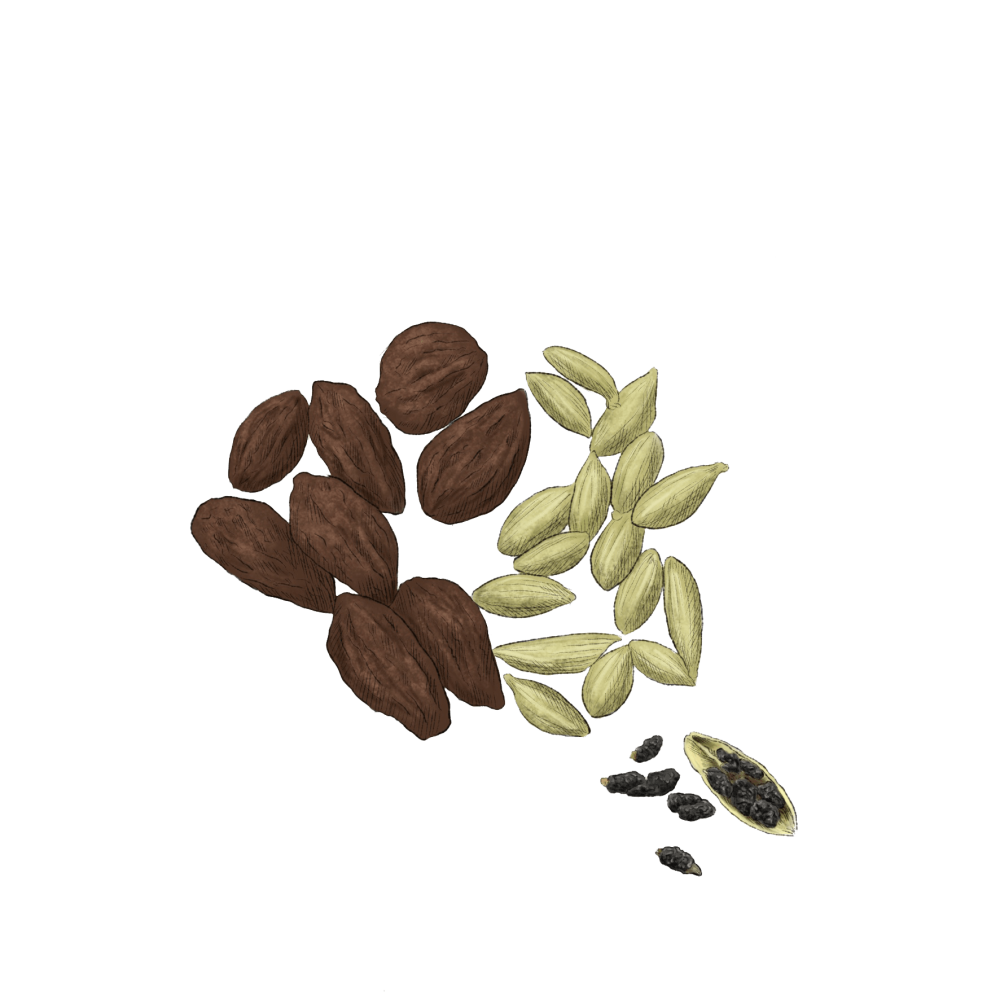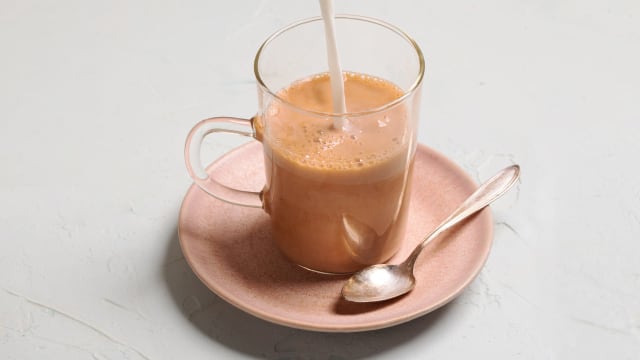Cardamom

Latin name: Elettaria cardamomum (green), Amomum subulatum (black)
Other names: capalaga, elaichi (Hindi)
Uses: spice
What is cardamom?
Cardamom comes from the seeds of a couple closely related plants in the ginger family. Its two popular variants (black and green) have distinct uses. Cardamom is known for its medicinal properties, strong flavor, and culinary versatility.
Why is cardamom healthy?
Chewing cardamom seeds release volatile oils with antibacterial properties that can help prevent bad breath and cavities. Studies confirm that cardamom oil can act as an analgesic.
What does cardamom taste like?
Its taste hovers somewhere between ginger and cinnamon, but green cardamom’s seeds and skin have different flavor profiles. While the latter is earthy and fresh with sweet tones, the former has a warm, slightly lemony mint-like coolness with a highly aromatic flavor. Fresh black cardamom has a sharper, slightly acidic flavor and once dried, it adopts a more smoky taste with a unique sweetness.
How do I use cardamom?
Remove the seeds from green cardamom pods and grind them before use, but black cardamom pods are best added whole during cooking and removed before serving. Cardamom is a popular seasoning in South and Southeast Asian dishes, particularly curries like the Thai massaman and the Indian rogan josh. It’s also a frequent flavor in Middle Eastern rice pilafs.
In parts of Asia, ground green cardamom powder is used to add fragrance to tea — including chai — while some Arab countries use it to scent their coffee. Also a popular spice in many Scandinavian recipes, such as mulled wine and glogg, green cardamom is used in a host of Scandinavian pastries and breads. Its inherent sweetness makes it an ideal garnish on almost all traditional Indian desserts as well.
What does cardamom pair well with?
The black and green varieties are not interchangeable; the black variant is never used in sweet dishes due to its strong smoky punch and is instead an essential part of the famous Indian garam masala. Both types are used to add depth to dals, biryanis, and curries across the subcontinent, and black cardamom lends its characteristic perfume to Chinese braised meat dishes and Vietnamese phở.
Where does cardamom grow?
The plant grows in rich, moist, well-drained soil in sun or partial shade, and the fruits are picked during dry season. Most of the species are cultivated in India, Sri Lanka, Malaysia and Guatemala.
Green cardamom is mostly found between India and Malaysia, whereas the black version is native to the eastern Himalayas and mostly cultivated in Eastern Nepal, Sikkim, West India, and southern Bhutan. Cardamom originated in India, and ancient trade routes took it west to the Mediterranean and east into the rest of Asia.
How to buy cardamom:
It's best to buy your seeds still in their pods and break a few open as needed. The spice will stay freshest that way. Whole seeds are available, and still vastly preferable to pre-ground powder.
Fun cardamom fact:
A German coffee planter introduced Indian cardamom to Guatemala before World War I and by 2000, the country had become the largest producer and exporter of cardamom in the world.





